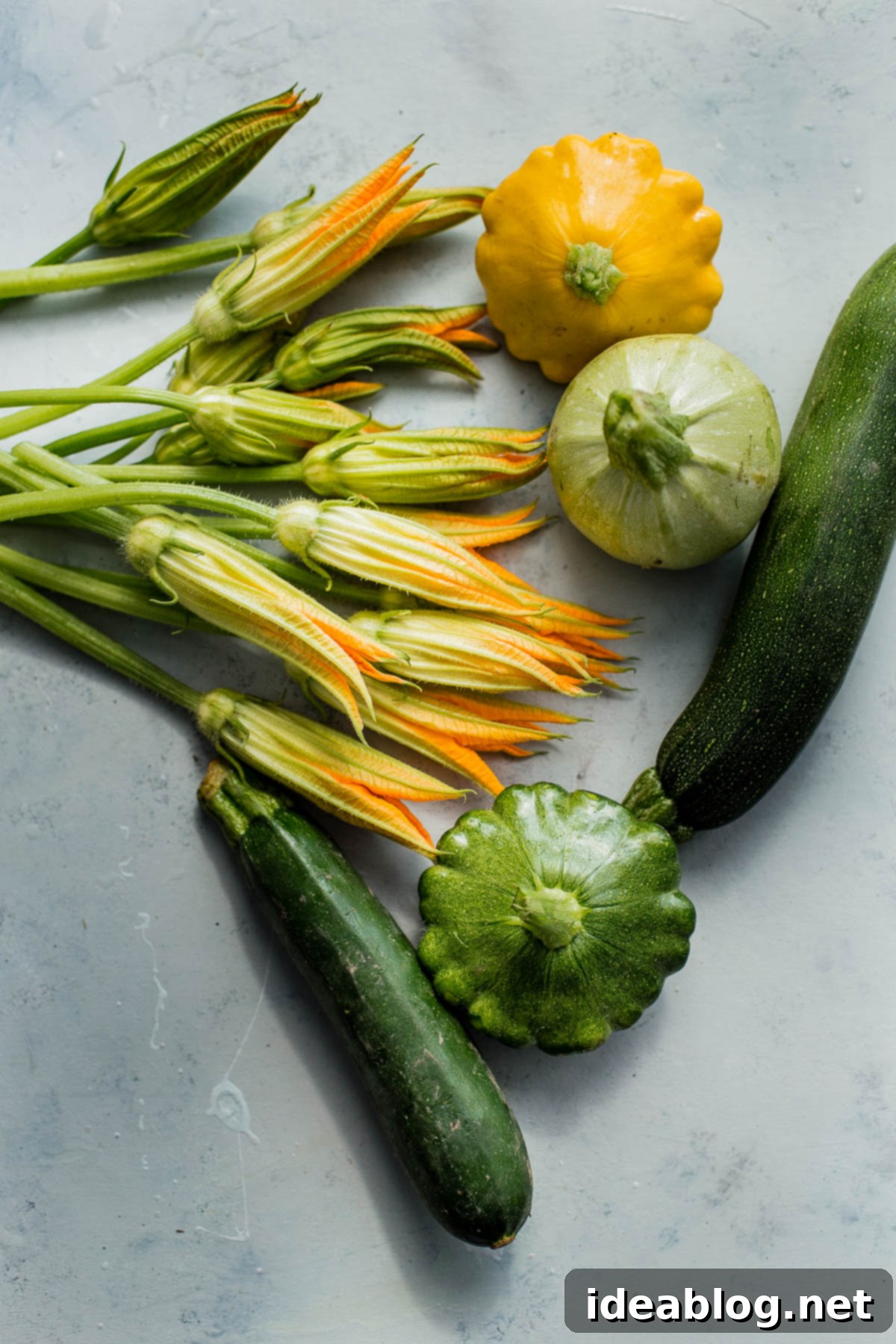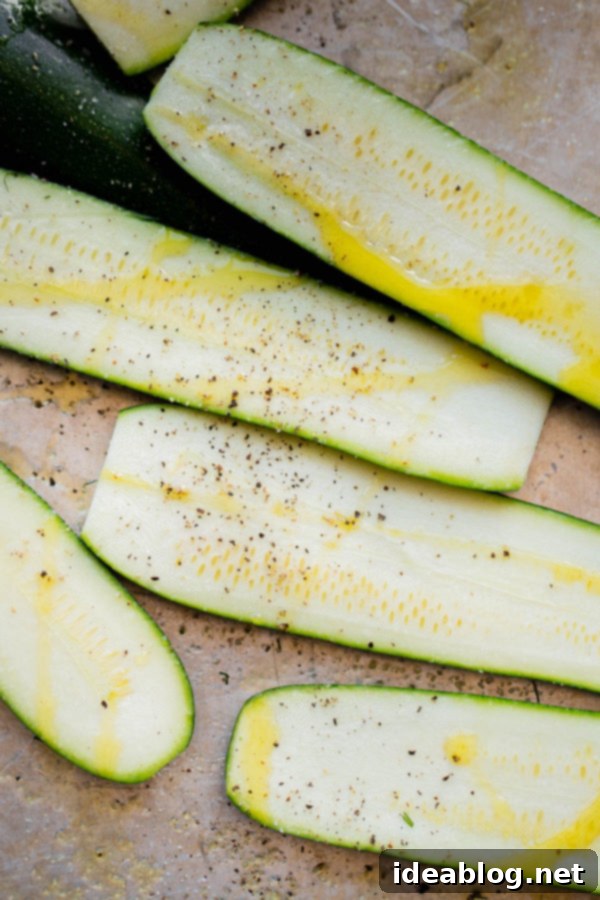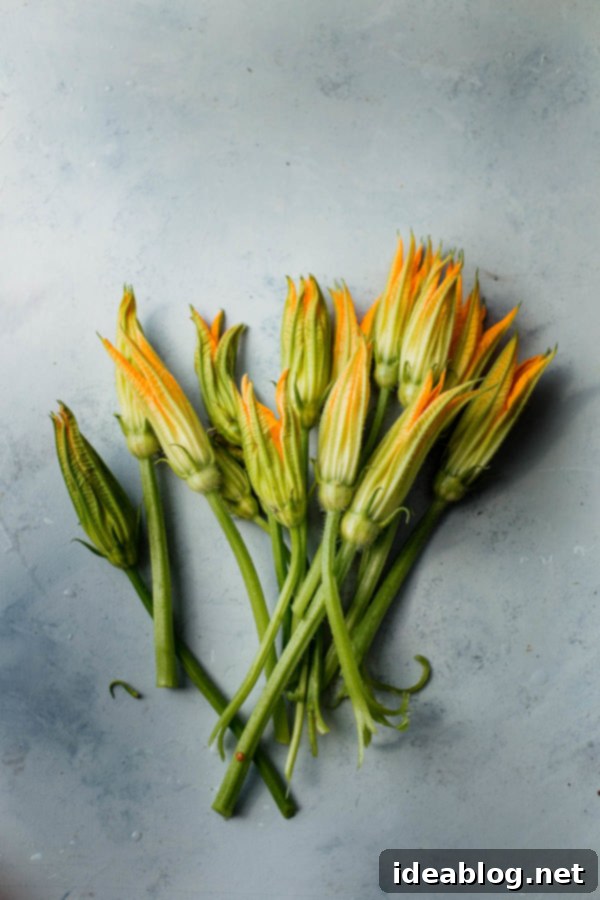The Ultimate Guide to Summer Squash: Varieties, Buying, Storing, and Culinary Inspiration
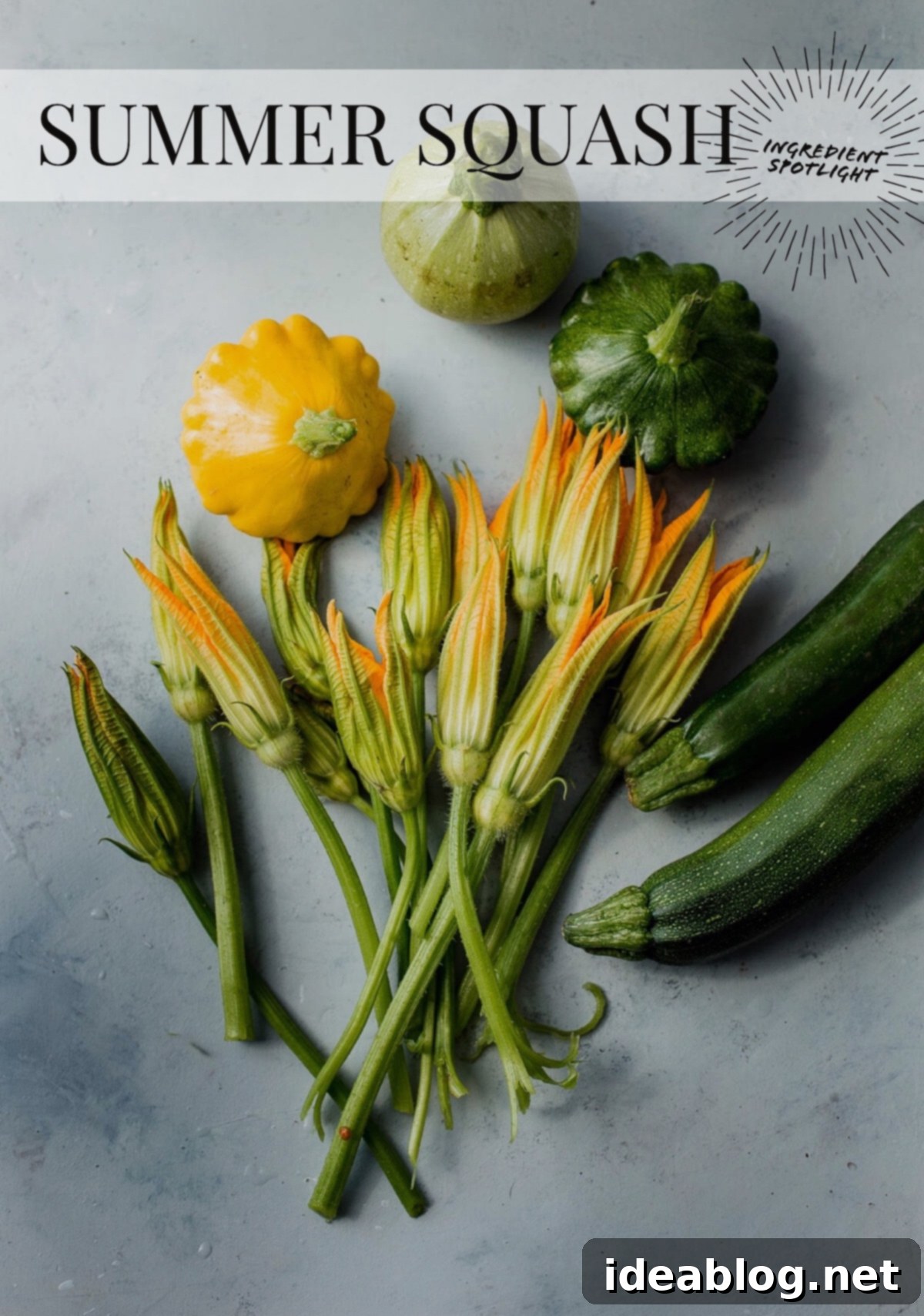
As the days grow longer and the sun shines brighter, summer brings with it an abundance of fresh, vibrant produce. Among the seasonal treasures that grace our kitchens, summer squash stands out as a true culinary delight. From the moment June arrives, filling gardens and farmer’s markets with its diverse shapes and colors, it quickly becomes a staple in our household. While many vegetables are enjoyed year-round, there’s an undeniable magic to savoring summer squash at its peak, when its flavor is most pronounced and its texture most tender. For me, it’s right up there with sun-ripened tomatoes, succulent stone fruits, and sweet berries – foods I simply can’t get enough of during the warmer months.
While zucchini, a popular variety of summer squash, often finds its way into our meals throughout the year, its consumption truly skyrockets during June, July, and August. This is when local farms offer the freshest, most flavorful specimens, making it irresistible. There have been countless weeks where our grill was loaded with four or five zucchini every few days, a testament to its versatility and our collective enjoyment!
The extensive squash plant family boasts an incredible array of varieties, ranging from cucumbers, melons, and gourds to hearty winter squashes like butternut and pumpkin. However, this comprehensive guide will shine an exclusive spotlight on the beloved summer squash. We’ll explore its delightful varieties, share essential tips for selecting and storing the freshest produce, and ignite your culinary creativity with a wealth of recipe ideas. We’ll even delve into the intriguing world of squash blossoms, those beautiful yet fleeting edible flowers you might have admired but perhaps hesitated to try. Get ready to embrace the flavors of summer!

Exploring the Diverse World of Summer Squash Varieties
If you’ve primarily limited your summer squash consumption to the ubiquitous green zucchini, you’re missing out on a vibrant spectrum of flavors, textures, and appearances! Summer squash comes in an astonishing array of forms, colors, and shapes, each offering a unique culinary experience. My top recommendation for discovering these treasures is to visit your local farmer’s market. These markets are typically brimming with diverse varieties that you might not find in a standard grocery store, allowing you to truly branch out and experiment.
Personally, I often gravitate towards zucchini – which itself offers a surprising range, from classic green to vibrant yellow, even striped and two-toned versions. While yellow squash (often crookneck or straightneck varieties) is also popular, I find that it tends to have larger seeds and a slightly blander flavor compared to zucchini, which boasts a more delicate taste and firmer texture.
Here are some of my favorite summer squash varieties and detailed tips on how to prepare them for optimal enjoyment:
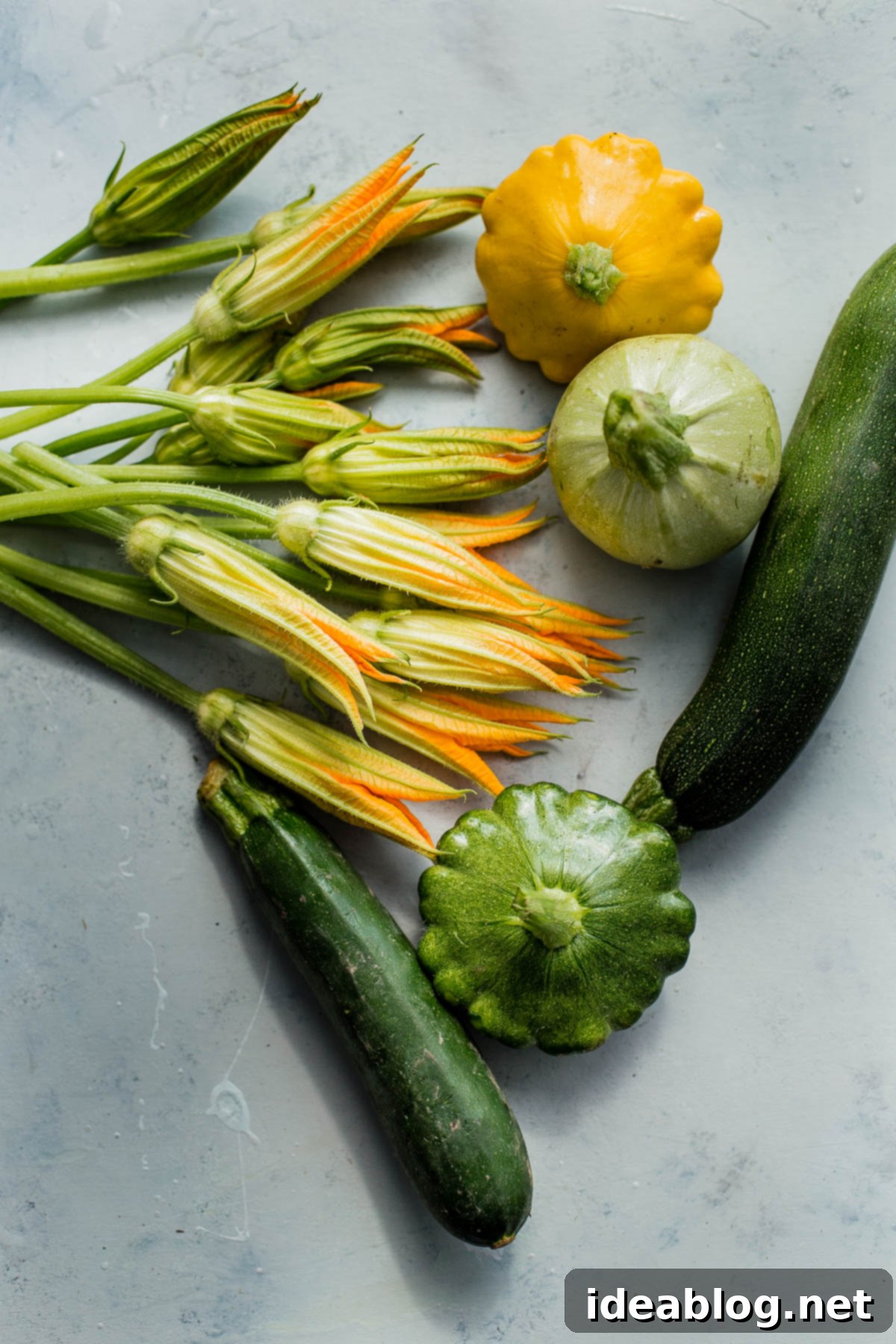
Green and Yellow Zucchini
Zucchini, in both its green and less common yellow forms, is my absolute go-to summer squash. Its mild flavor and firm flesh make it incredibly adaptable to a multitude of cooking methods. During the summer, one of my favorite preparations is to slice them lengthwise and grill them until tender with beautiful char marks. However, all summer squash varieties, including zucchini, have a remarkably high water content. To achieve maximum flavor and an ideal texture, especially for grilling or roasting, it is highly recommended to salt them in advance of cooking.
This pre-salting technique, often referred to as “sweating” the zucchini, works through the process of osmosis. When salt is applied to the surface, it draws out excess moisture from the squash. This not only concentrates its natural flavors but also prevents it from leaching water during the cooking process. Without this step, grilled or roasted zucchini can become soggy, and dishes like zucchini noodles or frittatas can turn watery. By removing this excess moisture, the squash can brown and caramelize more quickly, leading to a richer, more satisfying result.
To implement this, slice your zucchini lengthwise into ¼-inch thick pieces or into desired rounds. Arrange them in a single layer on a baking sheet, lightly salt both sides, and let them sit for 10 to 15 minutes. You’ll notice small beads of water forming on the surface. Before grilling or roasting, use a clean kitchen towel or paper towels to thoroughly pat the zucchini slices dry. Then, lightly coat them with olive oil, season with your preferred herbs and spices, and grill on medium-high heat or roast in a hot oven until perfectly tender and golden. The difference in flavor and texture will be remarkable.
Squash Blossoms
While not a squash variety in themselves, squash blossoms are an exquisite culinary treat deserving of special attention. These delicate, vibrant yellow-orange flowers are typically found at farmer’s markets and specialty stores, rarely making an appearance in standard grocery aisles. Most commonly, you’ll encounter the male flowers of standard zucchini plants, identifiable by their slender stems. If you’re lucky enough to find small, immature zucchinis still attached to their flowers, these are the female blossoms.
Many people shy away from squash blossoms, unsure of how to prepare them. However, once you consider them as an extension of young zucchini, their culinary potential becomes clear. They possess a subtle, delicate flavor, reminiscent of a mild, tender zucchini. Their versatility is surprising: they can be enjoyed raw, perhaps torn into a vibrant salad; stirred into frittatas or omelets; used as a delicate topping for pizzas; incorporated into pasta dishes; or, most famously, stuffed and fried.
While simple preparations are delicious, my absolute favorite way to enjoy squash blossoms is to carefully stuff them and then lightly fry them. The delicate crunch of the fried exterior contrasts beautifully with a creamy, savory filling. These fried squash blossoms stuffed with basil ricotta are a perfect example of a dish that, while requiring a bit of effort, is undeniably worth every minute for its incredible taste and elegant presentation.
For detailed tips on how to properly handle and store these extremely delicate blossoms, please refer to the preparation and storage section below.
Pattypan or Scallop Squash
Instantly recognizable by their distinct, shallow, round shape and scalloped edges, pattypan squash (also known as scallop squash) are charming additions to any summer meal. They come in vibrant yellow and green varieties and offer a slightly firmer, crunchier texture compared to standard zucchini. This unique characteristic makes them exceptionally well-suited for raw applications, where their crispness can truly shine. As an added bonus, their smaller size and flat surface make them incredibly easy to slice into beautiful, delicate ribbons using a mandolin. These ribbons are perfect for creating a refreshing summer version of a shaved vegetable arugula salad, adding both visual appeal and a delightful crunch.
For cooked preparations, I often slice the smaller pattypan squash horizontally into attractive discs before grilling or roasting them until tender-crisp. Larger pattypan squash, with their sturdy shape and ample cavity, are absolutely perfect for stuffing. Imagine them filled with a savory mixture of grains, herbs, cheese, and perhaps some ground meat or other vegetables, then baked until tender and fragrant.
Round Zucchini
Often affectionately called ‘eight-ball’ zucchini, these delightful round varieties evoke the image of miniature green pumpkins. Their flavor profile is very similar to that of traditional elongated zucchini – mild, slightly sweet, and versatile. However, their unique spherical shape makes them exceptionally ideal for stuffing. To prepare them, simply trim off the top, similar to how you would prepare a bell pepper or a small winter squash. Then, carefully scoop out the insides to create a cavity perfect for your favorite savory fillings, from rice and herbs to seasoned meat or vegetarian mixtures. They make for a visually appealing and satisfying individual serving.
Crookneck and Straightneck Yellow Squash (Optional but Common)
While the original text mentioned a general preference for zucchini over yellow squash due to seed size and flavor, it’s worth noting these common varieties. Crookneck squash has a distinctive curved neck and often a bumpy skin, while straightneck squash is, as its name suggests, straight and smooth-skinned. Both are bright yellow and share similar culinary uses to zucchini, though they can indeed become seedier and more watery if allowed to grow too large. They are excellent for sautéing, baking into casseroles, or adding to stir-fries, providing a pop of color and mild sweetness.

Expert Tips for Buying and Storing Summer Squash
Unlike their thick-skinned winter squash cousins, summer squash varieties are characterized by their delicate, thin skins and high moisture content. This means they are not designed for long-term storage and are best enjoyed within a week of being picked, sometimes even sooner depending on their freshness at purchase. Additionally, summer squash is particularly sensitive to extreme low temperatures, so it’s crucial to avoid placing it in the coldest sections or spots of your refrigerator, which can cause chilling injury and lead to softening or discoloration.
Selecting the Best Summer Squash
When you’re at the market, size truly matters when it comes to selecting summer squash. While a giant zucchini might seem impressive, larger specimens (typically longer than 6-8 inches) tend to have tougher seeds, a less sweet flavor, and can be excessively watery. For the best culinary experience, aim for small to medium-sized zucchini, pattypan, or yellow squash. These will offer the most tender flesh, sweetest flavor, and fewest seeds. Always look for squash that feels very firm and heavy for its size, indicating good hydration. The skin should be vibrant, glossy, and free from any significant blemishes, soft spots, cuts, or shriveling. A healthy stem also indicates freshness.
Optimal Storage for Longevity
To maximize the freshness and shelf life of your summer squash, always store it unwashed. Moisture is the primary enemy when it comes to spoilage, and washing produce before storage can introduce excess water that encourages mold and bacterial growth. Instead, place your unwashed summer squash in a perforated plastic bag or an open produce bag within the vegetable crisper drawer of your refrigerator. The crisper drawer’s controlled humidity environment helps maintain freshness without trapping too much moisture. This method generally allows summer squash to stay fresh and firm for 4 to 7 days.
Special Considerations for Squash Blossoms
If you’re fortunate enough to acquire delicate squash blossoms, immediate attention is key. These highly perishable flowers must be prepared and enjoyed as soon as possible – ideally within a few hours of purchase, or at the absolute latest, that very same evening. Their paper-thin petals are incredibly fragile and will quickly shrivel, wilt, and lose their vibrant color and texture, making them impossible to stuff or enjoy in their prime state.
When selecting squash blossoms, look for ones that are tightly closed, as these will hold up the longest and be easier to handle and stuff. Just before you plan to cook with them, gently remove the pistol (from female flowers) or stamen (from male flowers) from the center. Truth be told, I strongly advise against washing squash blossoms as their delicate structure can easily be damaged by water. If absolutely necessary, give them a very gentle dry brush or wipe. For short-term storage until preparation, lay the squash blossoms in a single layer on a paper-towel-lined plate or half-sheet pan and carefully refrigerate them. This helps absorb any minimal moisture and protects their delicate form.
Freezing Summer Squash for Later Enjoyment
If you find yourself with an abundance of summer squash, freezing is an excellent way to preserve it for longer. For best results, it’s recommended to blanch sliced or diced squash before freezing. Boil for 1-2 minutes, then immediately plunge into ice water to stop the cooking process. Drain thoroughly, pat dry, and then spread in a single layer on a baking sheet to flash freeze. Once frozen solid, transfer to freezer-safe bags or containers. Grated zucchini can also be frozen directly, without blanching, often squeezed of excess moisture first, perfect for baking into breads and muffins later.

Inspiring Your Kitchen with Summer Squash Recipes
The culinary possibilities for summer squash are truly endless, limited only by your imagination. Its mild, adaptable flavor and pleasant texture make it a versatile ingredient suitable for a vast array of dishes, from light appetizers to hearty main courses and even surprising desserts. I delight in incorporating them into everything from elegant bite-sized appetizers, crisp and refreshing salads, vibrant summer tarts, and even delightful desserts.
Quick Flavor Pairing Ideas for Summer Squash:
Summer squash possesses a fairly delicate, slightly sweet flavor profile that allows it to beautifully complement a wide range of ingredients. It pairs particularly well with fresh herbs, tangy cheeses, and bright citrus notes. Consider combining it with:
- Herbs: Fresh basil, mint, dill, parsley, oregano, thyme.
- Cheeses: Creamy ricotta, sharp cheddar, salty feta, rich Parmesan, tangy goat cheese.
- Aromatics & Citrus: Pungent garlic, zesty lemon juice and zest, mild onions.
- Other Vegetables & Nuts: Ripe tomatoes, crunchy pine nuts, walnuts.
- Spices: A hint of red pepper flakes for warmth, black pepper, mild curry powder, smoked paprika.
These pairings can elevate simple sautéed squash or form the foundation for more complex culinary creations.
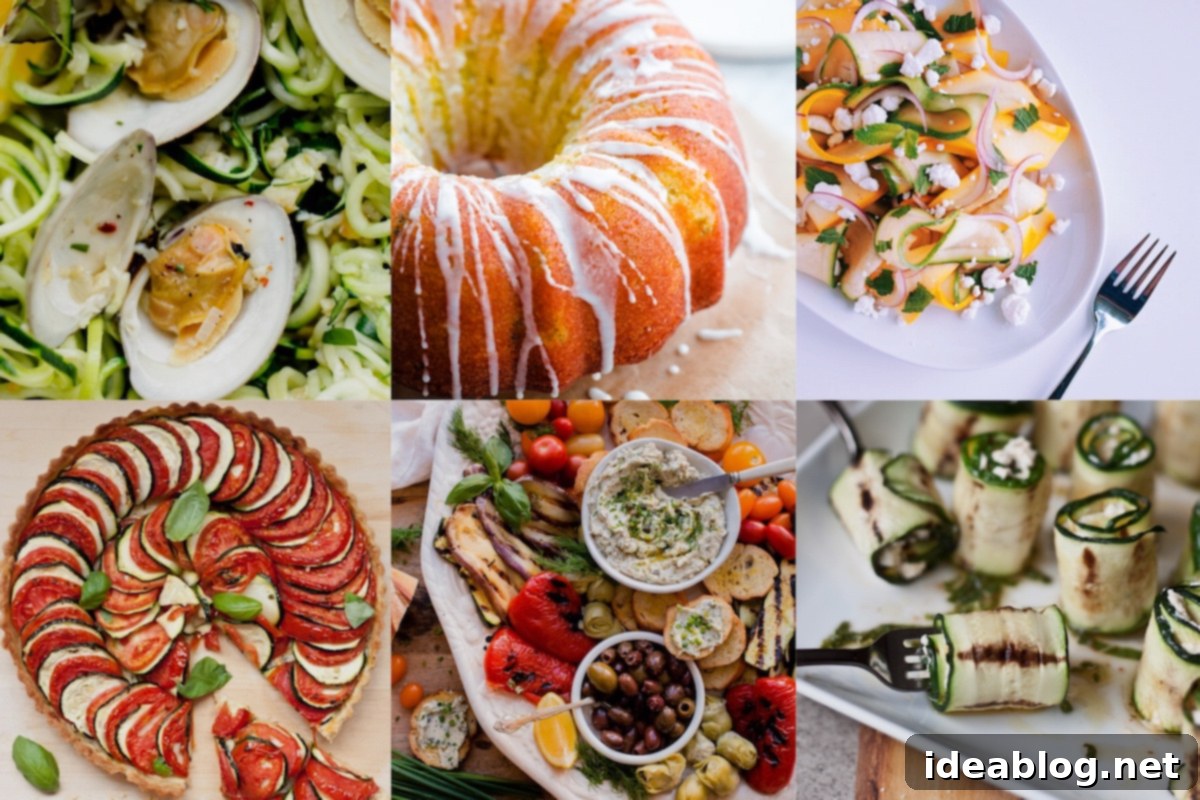
Delicious Summer Squash Recipe Inspiration:
To get you started, here are some inspiring recipes that showcase the incredible versatility of summer squash:
Top Row (Left to Right):
- Zucchini Pasta with Garlic Clam Sauce: A light and flavorful alternative to traditional pasta, featuring spiralized zucchini mingling with a savory clam sauce.
- Zucchini Cardamom Bundt Cake with Lemon Glaze: A surprisingly delicious way to use up excess zucchini, creating a moist, fragrant cake with warm spices and a bright citrus finish.
- Shaved Summer Squash Salad with Goat Cheese and Mint: A vibrant and refreshing salad showcasing thinly shaved zucchini and yellow squash, tossed with creamy goat cheese, fresh mint, and a zesty dressing.
Bottom Row (Left to Right):
- Tomato Zucchini Tart: A stunning and savory tart, perfect for summer gatherings, featuring layers of ripe tomatoes and tender zucchini baked into a flaky crust.
- Italian Antipasto Platter with Marinated Zucchini: Elevate your antipasto with marinated grilled or roasted zucchini, adding a tender, flavorful component to your spread.
- Zucchini Bites with Goat Cheese, Harissa, and Mint: Perfect bite-sized appetizers, these zucchini rounds are topped with a creamy, spicy, and refreshing combination of goat cheese, harissa, and fresh mint.
Whether you’re grilling, roasting, spiralizing, or baking, summer squash offers endless opportunities to create delicious and healthy meals. Don’t hesitate to experiment with different varieties and cooking methods to discover your own favorites.
For even more recipe inspiration featuring this incredible seasonal vegetable, be sure to browse the comprehensive recipe archive.
